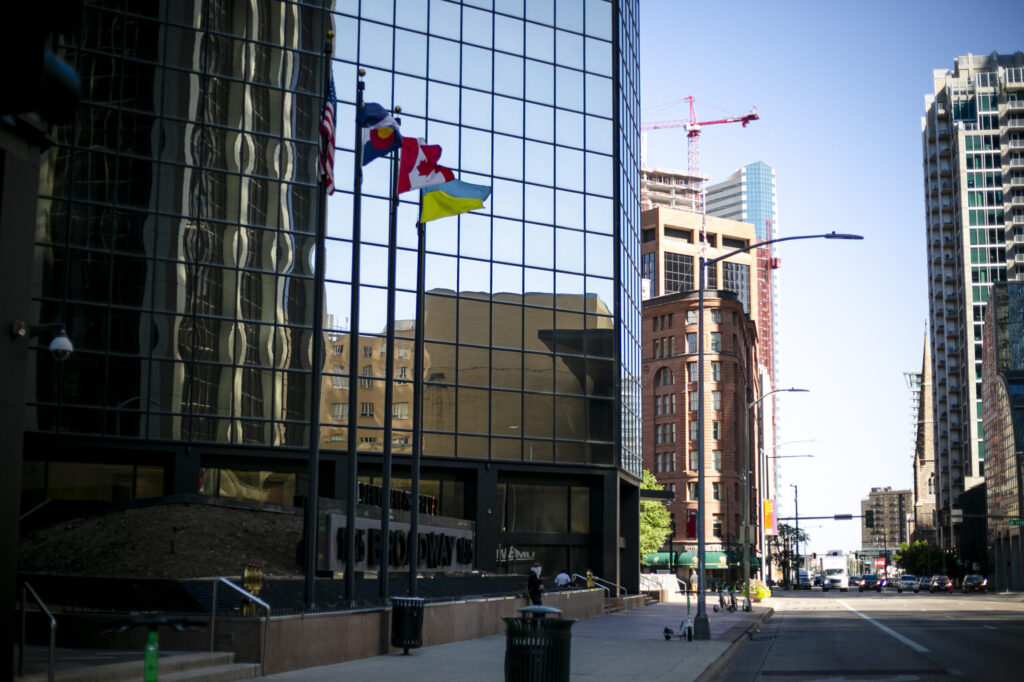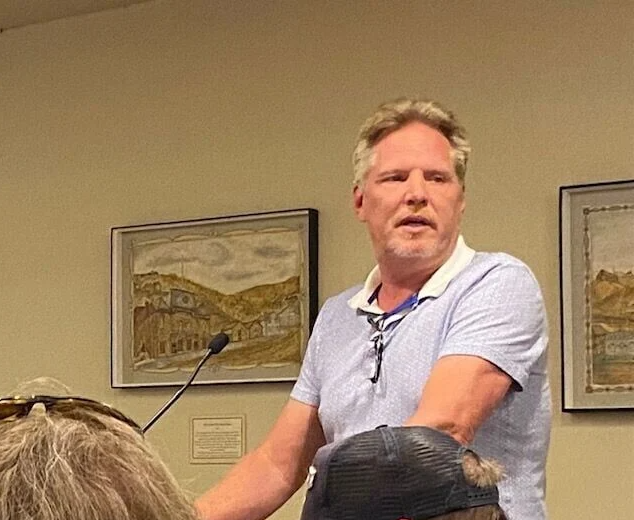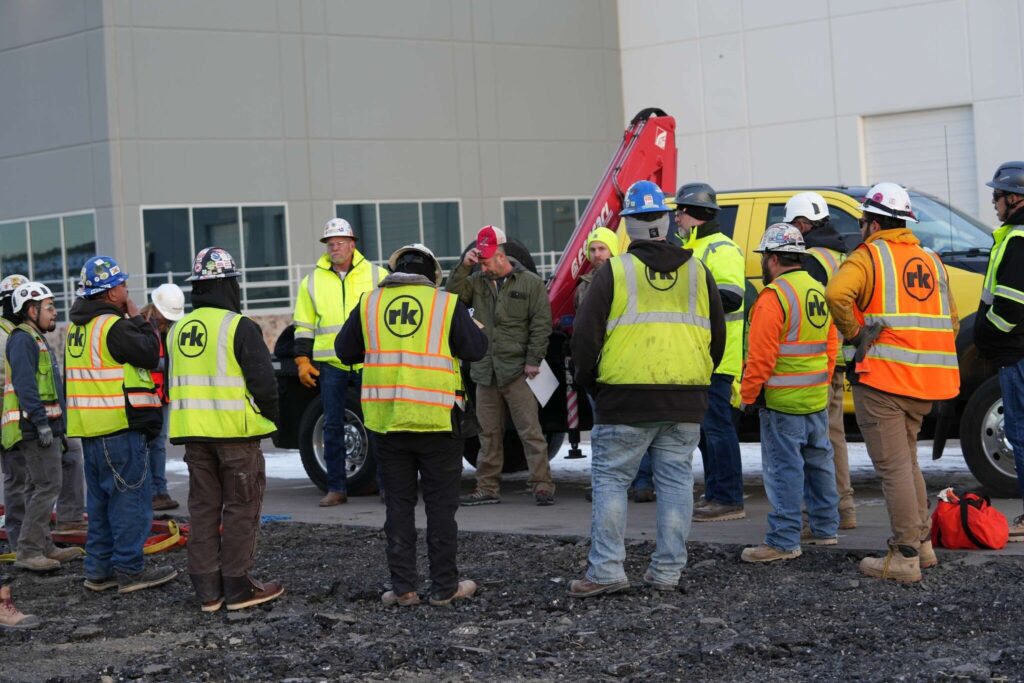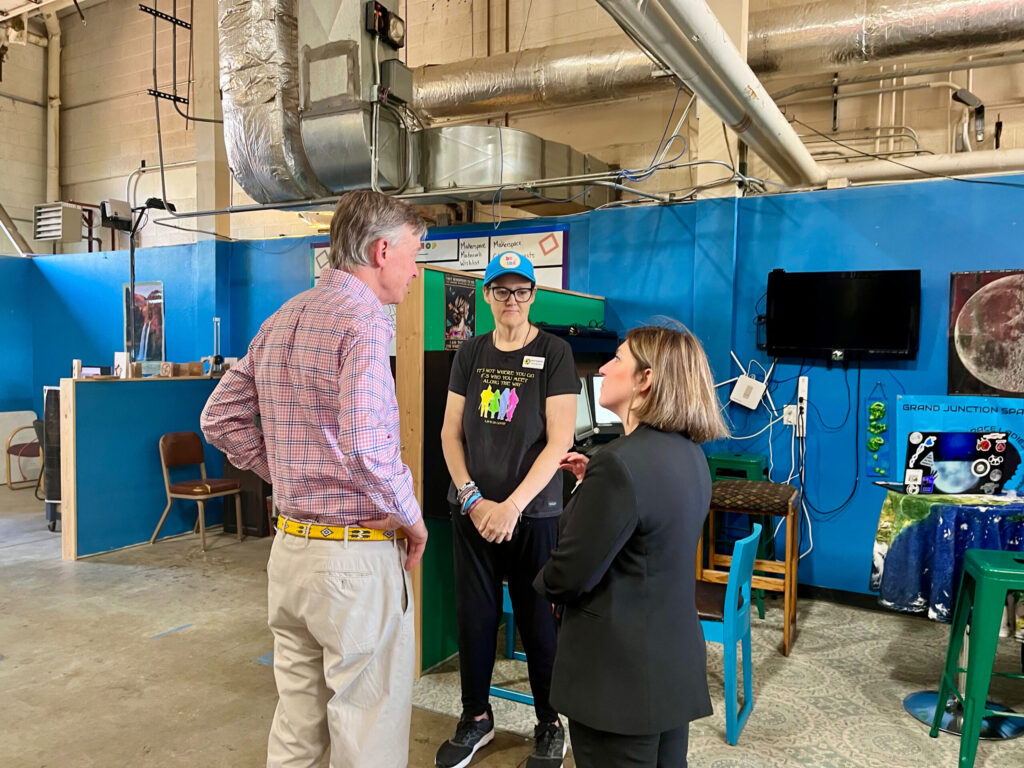Denver’s Crestmoor residents hit panic button as a bollard bikeway heads for their streets
Bollards — waist-high white plastic poles that line the new bike lanes popping up in downtown Denver and in several city neighborhoods — are headed for streets further from the urban core.
And neighbors aren’t happy about it.
“This project, far from enhancing our neighborhood, threatens to destroy the very qualities that make it a desirable place to live,” residents of Denver’s Crestmoor Park neighborhood wrote Mayor Mike Johnston last week, with a copy forwarded to the city’s Department of Transportation and Infrastructure.
DOTI is a well-known agency to residents in Denver neighborhoods further west that are coping with bollards installed on their streets during recent years.
That includes University Park, east of University Avenue along McWilliams Park, where the city installed a network of bollards and other “speed reduction features” to create a protected bikeway on busy E. Yale Avenue.
Following Monday’s snowstorm, that stretch generated a number of car-bollard accidents, as motorists navigated a notorious S-turn along Yale that had been made more perilous by slick roads and by the new bike safety devices.
“That S-curve was dangerous to begin with. People had died there,” resident John Marcucci told The Denver Gazette. On Tuesday, two accidents occurred apparently involving a number of cars and bollards. “There’s no relief on either side now.”
On trash days, Marcucci added, neighbors on Yale are reduced to placing their cans directly out in the bikeways, where they often sit for 24 hours. Neighbors, he said, have no other option for trash trucks to pick up their cans now that their curbs are set apart by the bollard-protected lanes.
Closer to downtown in Denver’s East 7th Avenue Historic District, hordes of bollards, colorfully painted lanes and new street signs arrived last year on a quiet stretch of one the city’s most serene neighborhoods.
Residents there now complain that the devices are eyesores, that they’ve prompted accidents and altercations, and have reduced the quality of city maintenance, as street sweepers seem unable to cope with the poles.
Seventh Avenue residents recount something that neighbors in some other affected areas are voicing, as well: DOTI hasn’t kept promises to keep neighbors apprised of plans for bikeways and isn’t responding to their pleas.
However, two months ago DOTI reportedly slashed the planned infrastructure of a bikeway headed for W. 29th Avenue near Sloan’s Lake after residents complained about losing their street parking.
Parking loss is just one of the objections on the list of neighbors in Crestmoor Park, the East Denver area in the crosshairs for the newest protected bikeway.
Residents there have had more opportunity than others to see and hear how those improvements — which are described by the city as creating a “comfortable, shared street environment” and “safe pathways” — are working in real situations.
Located south of E. Sixth Avenue Parkway between Holly Street and Monaco Parkway, Crestmoor is a museum piece for the low-density neighborhoods the Mile High City was creating back in the 1950s — wide home sites on deep setbacks, with 40-foot-wide streets that even today handle very few cars.
To residents’ surprise last month, DOTI contractors began painting lines on wide intersections that are to become paths for bollards.
At some intersections, those lines appear 10 feet out from the curb, creating what neighbors are calling ‘pinch points” that not only eliminate parking but force both car and any bike traffic into a narrower passage measuring 20 feet or less.
The spacing and the loss of parking are critical on what neighbors call “Soccer Saturday,” when visiting cars pack the streets around Crestmoor Park and its eight soccer pitches.
“It’s the most dangerous time,” said Cecilia Retelle Zywicki, on the board of the Crestmoor Homes Association and one of numbers of neighbors who have formed a crisis group to confront the city’s plans.
“You can’t fit two cars through the middle of the street,” she told a Zoom meeting attended by The Denver Gazette. She added that the installations would not only make the situation worse for cars and pedestrians, but for bikes, as well.
“It actually takes room away from them.”
“I’ve been fighting this since Day One,” Crestmoor resident Ilene Warneke told The Denver Gazette. “There was no public announcement that there would be a plan out there to look at.”
‘We see maybe 10 bikes on a heavy day’
As in other residential areas where bikeways are headed for quiet neighborhoods, Warneke and others said that bike traffic in Crestmoor is too low to merit the protective infrastructure.
“We see maybe 10 bikes on a heavy day,” she said, adding that she informally tracks a count from her home facing onto the proposed route down Kearney Street.
“This wasn’t a traffic problem, not something that needs pinch points,” Warneke said. “We don’t need these posts.”
Warneke recounted that she and other neighbors did a “street walk” early on with a DOTI representative and a representative from Denver City Councilmember Amanda Sawyer to discuss problems of cars speeding on Kearney. The street is very lightly traveled, just 256 cars a day according to one study.
Warneke said the city dropped the posted speed limit from 25 miles per hour to 20, largely relieving the problem. Now, neighbors wonder whether the bikeway improvements are an additional, inappropriate response to their earlier complaint about speed, using old data acquired by the city before the limit was dropped.
Neighbors are also upset about another harbinger of the looming bikeway — a plethora of signs.
“They’ve put in so many signs; it’s sign porn,” said John Sadwith, a former president of Crestmoor’s neighborhood association, who lives further north, where the proposed bikeway enters the neighborhood at Sixth Avenue.
At Sixth, a long-standing sign that kept cars from turning south into the neighborhood during rush hour when traffic backs up has now been obscured, he said, by a cluster of new bikeway signs. He questioned whether those are needed at all, and reiterated that DOTI hasn’t been responsive to neighbors’ input.
“There’s never been a bike accident on our street,” Sadwith added.
Speeding bikes are ‘bit dangerous for the neighborhood’
Meanwhile, he repeated what neighbors are saying in other bikeway locations — that cyclists attracted to the new routes are speeding.
“Bikes are coming down the hill (on Kearney) way too fast in front of my house. I don’t think it’s making it safe for pedestrians or making it safe for bikers,” Sadwith said.
William Merriken, who coordinated a traffic study for neighbors on Seventh Avenue in the historic district, said that emboldened cyclists have become a safety issue now that the city improvements are in place.
“It’s a bit dangerous for the neighborhood,” he told The Gazette.
Days before, he recounted, he dodged an electric bike that he said shot out in front of him at a corner along Seventh.
“The most egregious (examples) are with battery bikes and scooters. They just zoom,” he said.
Wendy Morrison, who lives near E. 7th’s intersection with Downing Street, said the hazards are all the more evident at three intersections heading east toward the park, where DOTI has installed roundabouts as a traffic calming device, replacing stop signs with yield signs.
“They don’t slow down,” she said of some cyclists. “Every day, we see near-misses.”
Adding to neighbors’ apprehension are frequent incidents involving rude behavior.
“I’m sure it’s a small percentage, but they think they have the right to shoot through traffic circles screaming at people and flipping people off,” Morrison told The Denver Gazette.
“They’re very aggressive and angry,” she added, recalling a close encounter with an electric cycle as she walked her 9-pound dog at the corner of 7th and Williams, where bollards and signs form an obstacle course for bikers, drivers and pedestrians.
After she missed being hit by 3 feet, Morrison recalled that the cyclist stopped, then flipped her off.
Her neighbor Merriken said that winter weather provides one relief to what numbers of neighbors describe as frequent encounters.
“With the windows shut we don’t hear the profanities,” he said.
Neighbors along Seventh Avenue noted that a series of actual accidents involving bollards, bikes and pedestrians followed the city’s installation last year. Those included at least one injury involving hospitalization.
Meanwhile, neighbors’ most tangible issue with the bollards and other improvements is the way they look.
“Bollards do nothing but collect dirt,” Morrison says of installations near her home, where sections of street out front are blocked from city streetsweepers by bollards.
“It’s like a cornfield growing. They can’t clean it up” she added, noting that she has had her landscaper hose down the street in the protected area.
“They are not maintained, there are weeds and trash,” Crestmoor’s Ilene Warneke added about bikeways she’s inspected in other areas, in anticipation of the one headed her way. “What they’ve done at Yale from Colorado to University is criminal.”
Transportation agency: Project ‘completes a critical gap’
The Denver Gazette heard numbers of comments in Crestmoor and in previously affected neighborhoods that neither the city nor Sawyer, the councilmember, had been responsive to queries. Sawyer’s office did not respond to repeated calls from The Denver Gazette for details regarding this story.
On Thursday, Sawyer defended the bike lanes and other changes via a statement sent by a council spokesperson.
“We remain committed to our residents’ number one priority, which is community safety. While I agree with the Crestmoor neighbors that the amount of signage that has been installed is gratuitous, the safety implications of this bike lane are paramount to our residents,” she said. “Adding flashing beacons at Alameda and 6th Avenue, as well as upgraded crossings at 8th Avenue, will allow District 5 children to access our schools safely. An additional stop sign at Kearney and 3rd Ave will address speeding issues through Crestmoor.”
She added: “These are consistent safety concerns that I’ve heard from neighbors since I took office in 2019. And while I certainly understand the resentment the residents feel at the installation of this bike lane, it directly addresses a number of these common safety concerns that they have also shared with us.”
DOTI Communications Director Nancy Kuhn provided some clarifications on the project just as this story went to press.
“The Kearney/Krameria project completes a critical gap in the bike network connecting the neighborhoods around the Cherry Creek Trail to North Denver,” she said in a statement.
Kuhn added that the department had held several “stakeholder meetings” and site visits to discuss the bikeway concepts and gain feedback over the past three years.
“Feedback was incorporated and the design was finalized in April 2024,” the agency’s statement said.
The statement said that several accommodations had been made to the plan, including reducing the number of “flex posts” and some “mid-block treatments” to minimize impacts to parking.
Johnston’s press secretary, Jordan Fuja, told The Denver Gazette that the mayor’s office planned to address the issue.
“Our first priority is to protect Denver residents whether they’re walking, biking or driving a car, by building safer streets for all,” Fuja said.
“We look forward to continuing conversations across neighborhoods to ensure we pursue commonsense solutions that meet community needs.”
Andy Draper, Crestmoor’s current HOA president, said he feels both DOTI and Sawyer have been responsive to queries.
“Personally, I think it’s a good thing,” Draper said of the impending bikeway plan through Crestmoor. “The city is progressive in trying to support various forms of transportation. The city had been fantastic.”
He added that his own contacts with DOTI representatives have been very professional.
Two months ago, Molly Lanphier, a project manager at DOTI, responded to questions from Crestmoor neighbors with a series of specifics on how the improvements would look and feel, using the term “flex post” in reference to bollards. She noted that the department had already “significantly reduced” the number of posts foreseen in the project.
Several neighbors continued to question Sawyer’s response.
Ilene Warneke said that while she had found Sawyer responsive early on in discussions, more recent queries about their options as the improvements loomed closer drew a reply that Sawyer’s office would cease to engage them on the issue, suggesting that Crestmoor neighbors were implying some sort of legal action.
Warneke joined other neighbors in inspecting the intersections following this week’s ice and snow. Some areas designated for bollards will become skating rinks, she said, as winter weather continues.
“Maybe they shouldn’t put them in at all,” she added.












